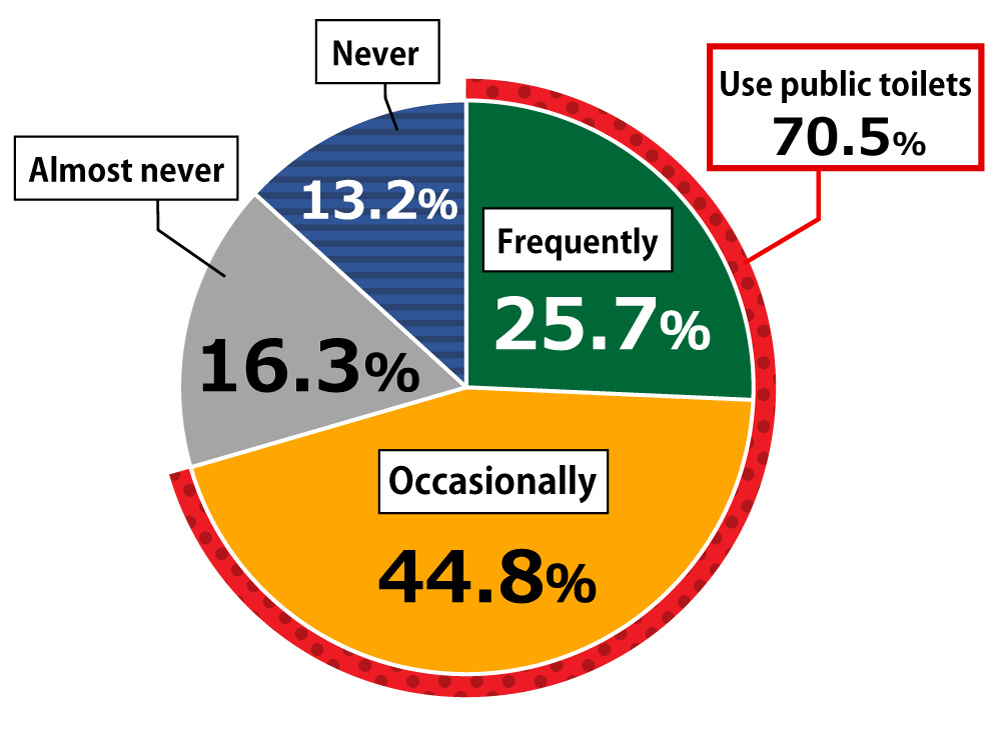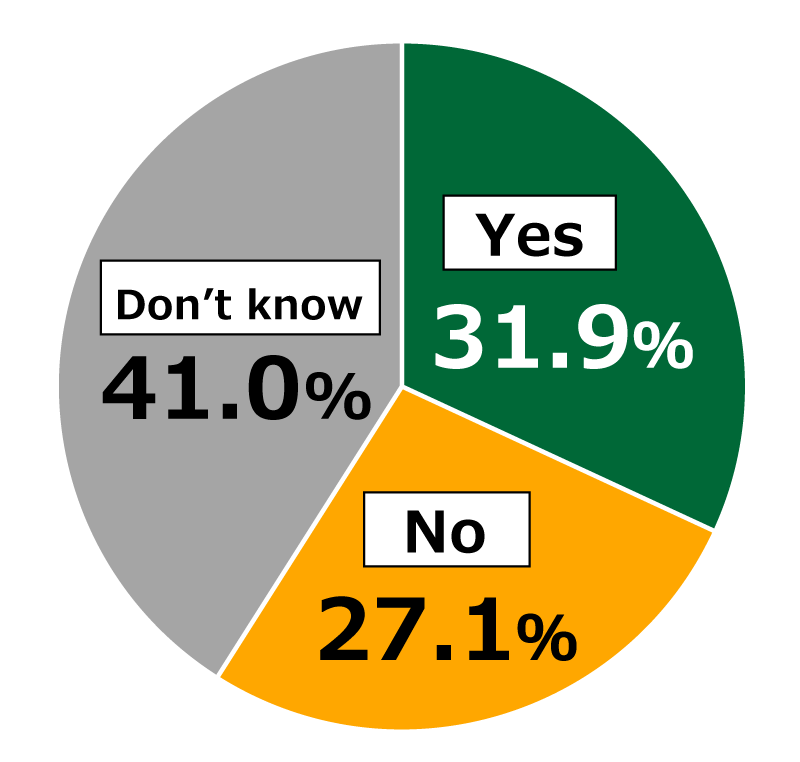Awareness Survey of 18-Year-Olds – Public ToiletsResults of 38th installment announced
The 38th installment of the Awareness Survey of 18-Year-Olds, launched by The Nippon Foundation in October 2018, was carried out from May 14 to 18 on the subject of “Public Toilets.” The survey found that more than 70% of respondents use public toilets when they go out, but also showed clear differences in utilization and impressions depending on where the public toilet is located.
The highest percentage of respondents, at 57%, used “toilets in department stores, movie theaters, and other commercial facilities,” while the use of “toilets in parks and along footpaths” ranked lowest at 14%. Compared with other locations, toilets in parks and along footpaths had a particularly negative image, with 68% of respondents describing them as “dirty,” 29% as “smelly,” 23% as “dark,” and 23% as “dangerous,” and only roughly 3% citing the positive impressions of being “clean” and “safe.”
Female respondents in particular noted a need for safety and security measures at toilets in parks and along footpaths, with 27% describing them as dangerous (compared with 18% for male respondents). This clearly showed that although toilets in parks and along footpaths are free and close at hand, the reality is that they cannot be used by everyone with peace of mind. In addition, 81% of respondents preferred Western-style toilets, while 7% preferred Japanese-style toilets for the hygienic aspect of not coming into contact with the toilet seat.
With regard to the current state of public toilets, more than one-fourth of respondents do not feel that public toilets are a fitting expression of the Japanese concept of hospitality known as omotenashi, for reasons including negligence in cleaning (71%), uninviting exteriors (37%), and the fact that immoral users do things like steal the toilet paper (30%).
Notes:
- For this survey, “public toilets” are defined as “toilets in department stores, movie theaters, and other commercial facilities,” “toilets in train and subway stations,” “toilets in parks and along footpaths,” “toilets in convenience stores,” “toilets in restaurants,” “toilets in hospitals,” and “toilets in roadside rest areas.”
- From the 13th survey, the number of respondents, comprising men and women aged 17 to 19, has been increased to 1,000 from 800. (With the exception of the 20th installment, “Awareness Survey of Society and Country,” all surveys cover respondents in Japan only.)
- In the information below, differences between total amounts and simple sums are due to rounding.
Survey 38. Public Toilets (Results announced on June 22, 2021)
Finding: 70.5% of respondents use public toilets when they go out. (n = 1,000)
“Do you use public toilets when you go out?”
- Frequently – 25.7%
- Occasionally – 44.8%
- Almost never – 16.3%
- Never – 13.2%

Finding: 27.1% of respondents do not feel that public toilets are a fitting expression of omotenashi, the concept of hospitality on which Japan prides itself. (n = 1,000)
“Do you feel that public toilets are a fitting expression of the omotenashi concept of Japanese hospitality?”
- Yes – 31.9%
- No – 27.1%
- Don’t know – 41.0%

Top reasons for considering public toilets to be a fitting expression of omotenashi (multiple answers allowed; n = 319)
- Many can be used for free by anyone – 79.0%
- They are kept clean – 58.9%
- They are always stocked with toilet paper – 37.9%
- They are equipped with features like rear cleansing and noise reduction – 36.7%
- They are convenient – 31.7%
- They offer privacy – 31.0%
- They can be used with peace of mind – 29.2%
- There are many of them – 23.8%
- Other – 1.6%
- None in particular – 3.4%
Top reasons for not considering public toilets to be a fitting expression of omotenashi (multiple answers allowed; n = 271)
- Many toilets are not kept clean – 71.2%
- Sometimes the exteriors are not inviting – 36.9%
- The morals of users who do things like soil the toilet or steal the toilet paper are questionable – 30.3%
- The gap between functions for toilets in places like department stores and airports with toilets in parks and along footpaths is too wide – 24.7%
- They can be difficult to use depending on one’s individual circumstances (male/female, disability, etc.) – 18.5%
- There aren’t enough public toilets – 12.2%
- Sometimes people stay in them for a long time, meaning that others who really want to use them cannot – 10.7%
- Too much attempt is made to appeal to tourists from overseas – 6.3%
- Other – 1.8%
- None in particular – 13.3%
Related News
Related Link
Contact
Public Relations Team
The Nippon Foundation
- Email: cc@ps.nippon-foundation.or.jp



